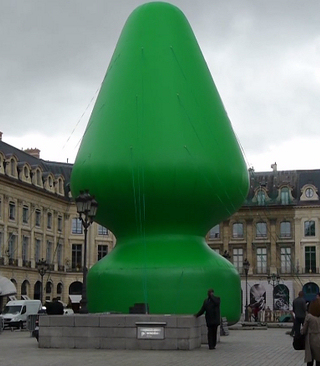Category Archives: amusements
Oddity of the Week: Fannies
You just could not get away with this these days!
From: 22 Vintage Adverts That Would Be Banned Today. Look at the other adverts in this series; they’re American but they’re a total hoot!
Something for the Weekend
Rolling Geriatrics
This is such a wonderful picture! The Rolling Stones at the Adelaide Oval preparatory to recommending their Australian tour. Just which geriatrics home have they been let out of for the day?

Mind, they’ll probably still be going strong long after me!
Oddity of the Week: Sex Pistols
We are further away in time from Sid Vicious’s 1977 Sex Pistols than they were from the end of World War 2.

Aside: Bloody Hell! This also means I was born closer to the death of Queen Victoria than to now.
Your Interesting Links
More links to interesting articles you may have missed.
Have you ever wondered how glow sticks work? Well wonder no more because here’s the explanation. I love those aromatic dye molecules; they’re similar to the ones I used when I was a post-grad student.
So chemicals are bad then? Well not so much. Five myths about the chemicals.
Want to avoid getting cancer? The Cancer Code provides a 12 point guide to avoiding unnecessary risk.
OK so let’s have something a bit more light-hearted …

Feral pigeons can be a pain, especially in cities, but wood pigeons (above) make wonderful contribution to our countryside. “That eat excellent”, too!
Rats! Nasty, dirty, disease-ridden creatures aren’t they? Well actually they aren’t dirty at all though rats do carry all sorts of unknown bugs. But then so probably do many creatures. We just don’t know, because we haven’t looked.
What looks like a rabbit, stands on two legs and walks? No, not Bugs Bunny but an extinct giant kangaroo. Yes, this one was basically too big to hop efficiently and was adapted to walk.
And while we’re on strange things in the animal world, here are five surprising facts about squirrels, including that they make jerky!
Most Brits will probably remember the wildlife film from some 15 or more years ago of squirrels beating an obstacle course to get food — if only because a well known brand of beer used it for a commercial! Seems Americans don’t know it, because one journalist conducted a human vs. squirrel battle of wits. And yes, the squirrels won!
Liz Heinecke specialises in hands-on science for kids which can be done at home.
Why is it we all love pizza? What makes it so irresistibly delicious? Turns out it is all down to the chemistry of the ingredients and the cooking.
Anthropologists have been arguing for decades about how the Pacific Islands were colonised. Now it seems that the voyage of the Kon-Tiki was misleading and that the Pacific islands were colonised from the west by skilled navigators, as the genetics suggest.
Back to something more serious for a minute. George Monbiot takes his weekly side-swipe at big business and big politicians.
Meanwhile we’re all getting lonelier as families and communities are becoming more fragmented. And the loneliness isn’t good for us. George Monbiot (again) concludes that our lives are becoming nasty, brutish and long.
Finally I’ll leave you with a couple of less serious items.
First a look at fictional characters who would have been vastly improved by an abortion. At last someone agrees with my jaundiced view of the classics.
And finally Paris’s giant inflatable


Something for the Weekend
Oddity of the Week: Coffee Grinding
The coffee plant is native to Ethiopia, but the first evidence of coffee beans being turned into a beverage comes from fifteenth-century Yemen. The fashion for this black, bitter drink spread across the Middle East and the Mediterranean, reaching Europe in the late sixteenth century. Although hand-operated spice mills had been in use since the 1400s, coffee beans continued to be ground using the more basic technology of mortar and pestle, or by millstones. Even as late as 1620, when the Pilgrim Fathers sailed for America on the Mayflower, all they brought with them for grinding coffee was an adapted mortar-and-pestle device.
In the 1660s a certain Nicholas Book, ‘living at the Sign of the Frying Pan in St Tulies Street’ in London, publicized himself as the only man known to make mills that could grind coffee to powder, but he was not necessarily the inventor of the machine he manufactured. The first US patent for a coffee grinder was issued in 1798 to Thomas Bruff of Maryland, who, when he was not grinding coffee, was Thomas Jefferson’s dentist.
From William Hartston; The Things that Nobody Knows: 501 Mysteries of Life, the Universe and Everything; Atlantic Books; 2011
Something for the Weekend
Oddity of the Week: Currywurst
The Currywurst Museum in Berlin, located just beside Checkpoint Charlie — the most famous crossing point in the Berlin Wall, until it was knocked down in 1989.
The museum’s existence speaks of the astounding success of a very late arrival on the wurst scene, not the heir to proud traditions of an Imperial Free City, but the result of food shortages in post-1945 Berlin. Parodying John Maynard Keynes, who wrote a book about The Economic Consequences of the Peace, you might say that the currywurst is one of The Gastronomic Consequences of the Peace. And it is still very much with us — an essential part of the Berlin experience.
“Currywurst was invented by the help of an unknown British soldier, who sold curry powder on the black market in Berlin in the late 40s. And for these very cheap sausages, they need some sensory contrast, so they decided to sprinkle curry powder on the sausage,” says [Peter Peter, the food correspondent of the Frankfurter Allgemeine Zeitung].

“It was a time when we frenetically discovered foreign dishes, so it was interesting having something Indian, something exotic. It became a symbol of a town that had never had excellent sausages.
“After 1989, Berlin became very popular; a lot of Germans discovered Berlin – so going to a currywurst stall became an experience of a lot of young people. So a dish that in a certain way is a white trash dish became a symbol of visiting Berlin, of young lifestyle.”
From: Neil MacGregor, “The Country with One People and 1200 Sausages”; BBC News Magazine; www.bbc.co.uk/news/magazine-29380144

